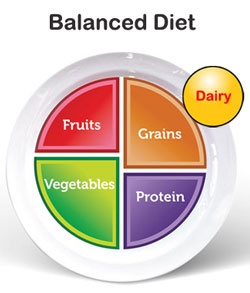How to Create a Balanced Feeding Plan

Creating a balanced feeding plan is essential for maintaining optimal health, whether for yourself, your family, or pets. A well-structured feeding plan ensures that all nutritional needs are met, promoting energy, growth, and overall well-being. This article will guide you through the key steps and considerations to develop an effective and balanced feeding plan.
Understanding Nutritional Needs
Before designing a feeding plan, it’s crucial to understand the nutritional requirements based on age, activity level, health status, and specific goals. Nutrients are broadly categorized into macronutrients and micronutrients:
| Nutrient Type | Description | Examples |
|---|---|---|
| Macronutrients | Provide energy and support bodily functions | Carbohydrates, Proteins, Fats |
| Micronutrients | Support metabolism and prevent deficiencies | Vitamins, Minerals |
Macronutrients Explained
- Carbohydrates: The body’s primary energy source. Include whole grains, fruits, and vegetables.
- Proteins: Essential for muscle repair and growth. Sources include lean meats, legumes, and dairy.
- Fats: Necessary for hormone production and cell health. Focus on healthy fats like avocados, nuts, and olive oil.
Micronutrients Importance
Micronutrients such as Vitamin A, C, D, calcium, and iron play vital roles in immune function, bone health, and oxygen transport.
Steps to Create a Balanced Feeding Plan
- Assess Individual Needs: Consider age, weight, activity level, and any medical conditions.
- Set Clear Goals: Weight management, muscle gain, or general health.
- Plan Meals and Snacks: Distribute nutrients evenly throughout the day.
- Incorporate Variety: Include different food groups to cover all nutrient bases.
- Monitor and Adjust: Track progress and tweak the plan as needed.
Sample Balanced Feeding Plan Table
| Meal | Food Items | Nutritional Focus |
|---|---|---|
| Breakfast | Oatmeal with berries and nuts | Carbs, fiber, healthy fats |
| Snack | Greek yogurt with honey | Protein, probiotics |
| Lunch | Grilled chicken salad with veggies | Protein, vitamins, minerals |
| Snack | Apple slices with almond butter | Fiber, healthy fats |
| Dinner | Baked salmon, quinoa, steamed broccoli | Omega-3 fats, protein, fiber |
Frequently Asked Questions (FAQ)
Q1: How often should I eat in a balanced feeding plan?
A: Typically, 3 main meals and 2-3 healthy snacks spread evenly to maintain energy levels.
Q2: Can I include treats in my feeding plan?
A: Yes, moderation is key. Occasional treats can be part of a balanced diet without compromising health.
Q3: How do I adjust the plan for weight loss?
A: Focus on portion control, increase protein intake, and reduce simple carbohydrates and unhealthy fats.
Q4: Is hydration part of a feeding plan?
A: Absolutely. Drinking adequate water is essential for digestion and overall health.
Creating a balanced feeding plan is a dynamic process that requires attention to individual needs and flexibility. By following these guidelines, you can develop a sustainable and nutritious eating strategy that supports your health goals.
